#ngc 2024
Photo

NGC 2024 Flame Nebula © ESO
#nebula#space#astrophotography#flame nebula#ngc 2024#night sky#stars#astronomy#planet#cosmos#universe#planets#galaxy
1K notes
·
View notes
Text

The Horsehead Nebula (Barnard 33, center) and the Flame Nebula (NGC 2024, lower left) // galactic_surfer
#astronomy#astrophotography#nebula#emission nebula#diffuse nebula#dark nebula#horsehead nebula#Barnard 33#flame nebula#NGC 2024#Sh2-277#orion
93 notes
·
View notes
Text

Alnitak & The Flame Nebula (NGC 2024); 2021
#space#nebula#outer space#flame nebula#ngc 2024#fire#stars#celestial#cosmic#cosmos#orion#constellations#beautiful#beauty#escape#pretty#dark#spiritual#orange#space dust#out of this world#galaxies#universe#the unknown#astrophotography#photography#deep space#alnitak
126 notes
·
View notes
Text
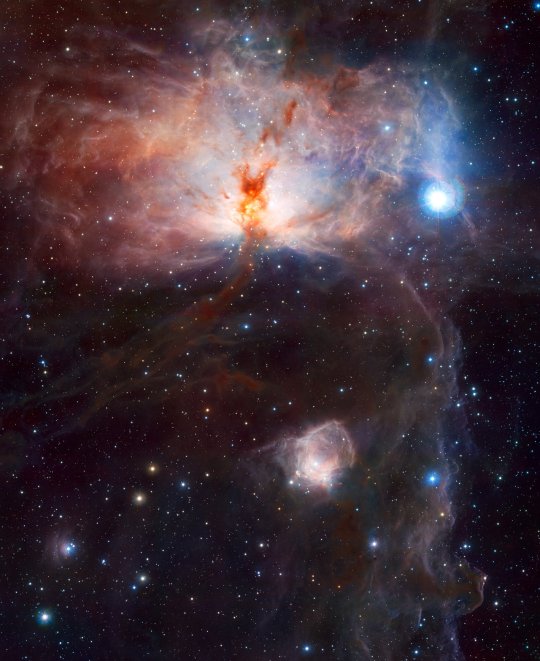
Flame Nebula (NGC 2024).
Credit: ESO/J. Emerson/VISTA.
#space#science#nature#astronomy#Universe#Cosmos#Astrophotography#NASA#night sky#stars#astro community#outer space#astrophysics#cosmology#nebula
518 notes
·
View notes
Text
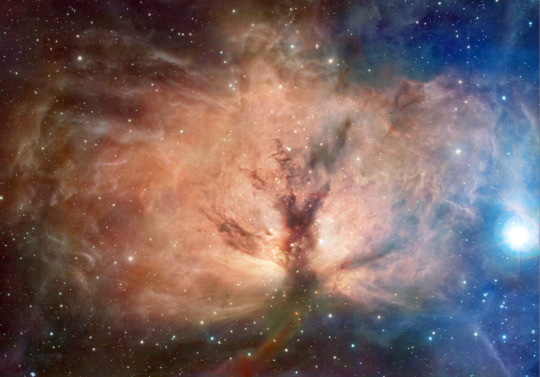
NGC 2024, Flame Nebula
765 notes
·
View notes
Text

Comet 12P/Pons-Brooks near NGC 6888
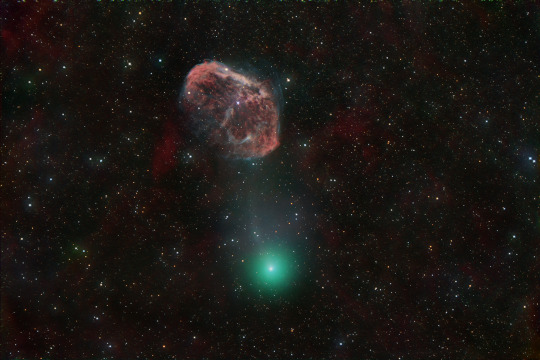
l Michael Jäger l Austria l Jan. 2024
#comet#ngc 6888#space#nasa#astrophotography#astronomy#solar system#crescent nebula#comet 12p/pons brooks#stars#galaxy#planets#universe#night#sky
462 notes
·
View notes
Photo
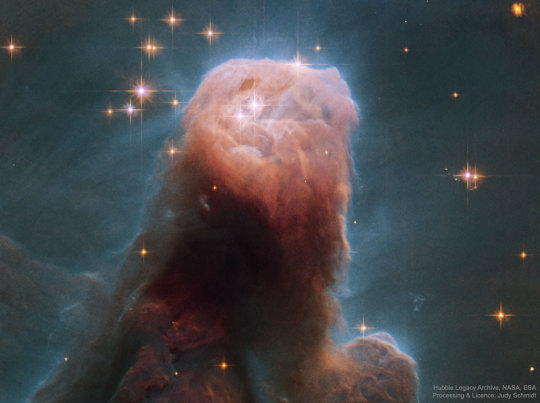
2024 February 4
The Cone Nebula from Hubble
Image Credit: Hubble Legacy Archive, NASA, ESA - Processing & Licence: Judy Schmidt
Explanation: Stars are forming in the gigantic dust pillar called the Cone Nebula. Cones, pillars, and majestic flowing shapes abound in stellar nurseries where natal clouds of gas and dust are buffeted by energetic winds from newborn stars. The Cone Nebula, a well-known example, lies within the bright galactic star-forming region NGC 2264. The Cone was captured in unprecedented detail in this close-up composite of several observations from the Earth-orbiting Hubble Space Telescope. While the Cone Nebula, about 2,500 light-years away in Monoceros, is around 7 light-years long, the region pictured here surrounding the cone's blunted head is a mere 2.5 light-years across. In our neck of the galaxy that distance is just over half way from our Sun to its nearest stellar neighbors in the Alpha Centauri star system. The massive star NGC 2264 IRS, seen by Hubble's infrared camera in 1997, is the likely source of the wind sculpting the Cone Nebula and lies off the top of the image. The Cone Nebula's reddish veil is produced by dust and glowing hydrogen gas.
∞ Source: apod.nasa.gov/apod/ap240204.html
208 notes
·
View notes
Text
HOW DO WE KNOW HOW THE MILKY WAY LOOKS LIKE??
Blog#362
Saturday, December 30th, 2023
Welcome back,
This is the spiral galaxy NGC 2835, imaged by the impeccable, seemingly timeless Hubble Space Telescope.

And this is NGC 1132, an elliptical galaxy captured through the tandem efforts of Hubble and NASA's Chandra X-ray Observatory.
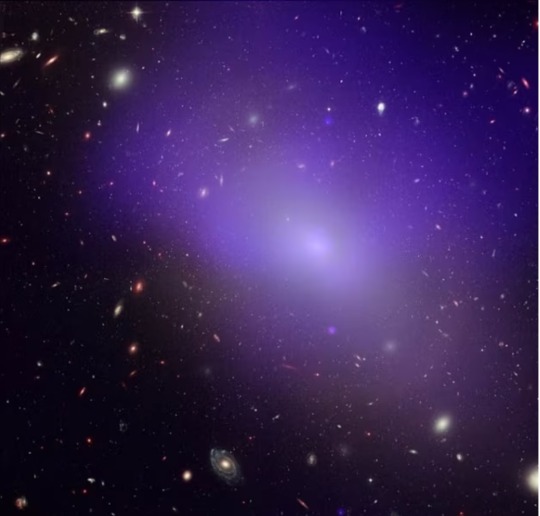
We know what both of these breathtakingly beautiful galaxies look like because we can see them from afar. How then do we know what our own Milky Way galaxy looks like, seeing as how we are inside it?
While we've never been able to zoom out and take a true galactic selfie, there are numerous observations that clue us in to the structure of our home galaxy. The greatest hint comes from looking at other galaxies. While there are perhaps two trillion in our observable universe, surprisingly, they only seem to come in three discernable varieties: spiral, elliptical, and irregular.

Spiral galaxies have a mostly flat disk with a bright central bulge and arms that swirl out from the middle. Elliptical galaxies tend to be round or oval with a uniform distribution of stars. Irregular galaxies are like stellar splotches in space, with little structure at all.
Gazing skyward from our vantage point on and around Earth, there are clear signs that the Milky Way is a spiral galaxy. You can see one sign with the naked eye! The Milky Way appears in our sky as a relatively flat disk.
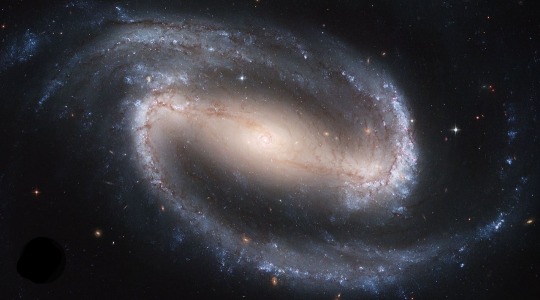
Using more sophisticated methods, astrophysicists and astronomers have provided two more clues to the structure of the Milky Way.
"When we measure velocities of stars and gas in our galaxy, we see an overall rotational motion that differs from random motions," Sarah Slater, a graduate student in cosmology at Harvard University, wrote. "This is another characteristic of a spiral galaxy."
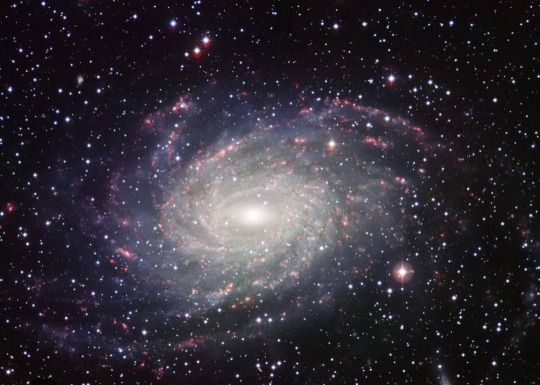
Moreover the gas proportions, colors, and dust content are similar to other spiral galaxies, she added.
Aside from these lines of evidence, astronomers are also using their tools in ingenious ways to map the structure of the Milky Way. Just this year, scientists used two radio astronomy projects from different parts of the globe to measure the parallaxes – differences in the apparent positions of objects viewed along two different lines of sight – from masers shooting off electromagnetic radiation in numerous massive star forming regions in our galaxy.
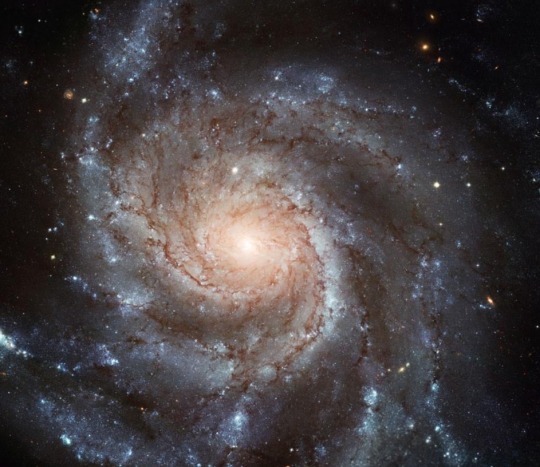
"These parallaxes allow us to directly measure the forms of spiral arms across roughly one-third of the Milky Way, and we have extended the spiral arm traces into the portion of the Milky Way seen from the Southern Hemisphere using tangencies along some arms based on carbon monoxide emission," the researchers explained. They coupled these observations with other gathered data points to construct a new image of the Milky Way. This is our home galaxy, in all its resplendant glory.
Originally published www-realclearscience-com
COMING UP!!
(Wednesday, January 3rd, 2024)
"WHAT IS QUARK MATTER??"
#astronomy#outer space#alternate universe#astrophysics#universe#spacecraft#white universe#space#parallel universe#astrophotography#galaxies#galaxy
159 notes
·
View notes
Text

NGC 2359, Thor's Helmet
Distance: 15,000.00 light years
Constellation Canis Major
Feb 28,29 2024 -Montcada i Reixac-
#astrophotography#urban astrophotography#astrophotos#astro observations#cosmos#original photographers#astronomy#universe#thorshelmet
79 notes
·
View notes
Text

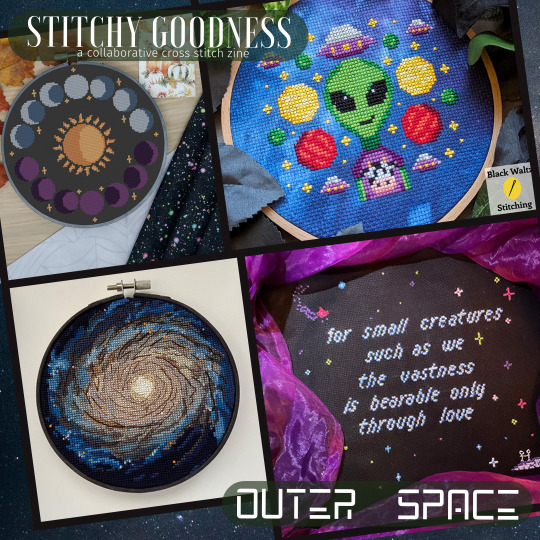

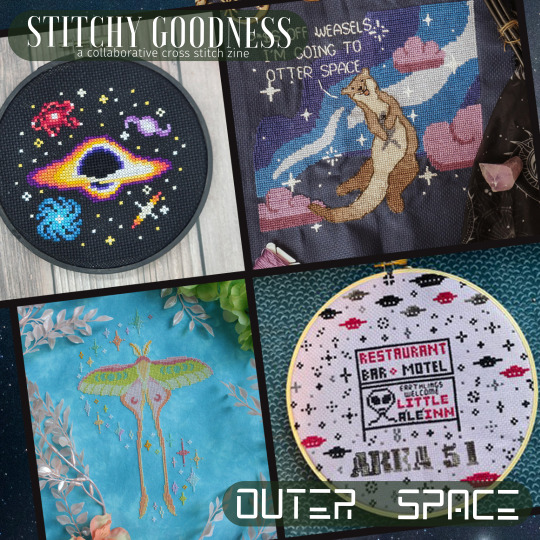

I'm in the newest Stitchy Goodness zine of cross stitch patterns! The theme was Outer Space, so I came up with "Saturniidae Satellite", a celestial-themed moth based on the Chinese moon moth! The zine is available until February 17, 2024, and includes all 15 patterns pictured here. If it's after that date, you'll have to check with the inidividual designers for availability of patterns. Pattern names and their designers are under the cut!
Monsterous Designs - Phases
Black Waltz Stitching - Alien Friend
Neutrino Stitch - Galaxy NGC 3147
Scornflake GRRRL - Vastness
Pibble Patterns - New Horizons
Stitchy Rin - Uranus
Romy's Creations - I Will Catch the Moon
Cobweb And Rose - Ghost Tours: Mars
Salty Stitchez Studio - Black Hole
Cross Stitch Rattos - Otter Space
Sprouting Lupine - Saturniidae Satellite
Crafy Yams - Area 51
The Stitch Crpyt - Mother Universe
Flossy Fox Shop - Wish Upon A Space Dragon
Snailfish Stitches - Space Glitter
#cross stitch#fiber art#my art#my patterns#stitchy goodness zine#cross stitch patterns#alt text in image#stitchy goodness zine issue 3: outer space
86 notes
·
View notes
Text
2024 April 3
A nebula is shown that appears like a firework. Radial filaments connect a glowing halo to a star in the center that appears as a blue dot.

Unusual Nebula Pa 30
Image Credit: NASA, ESA, USAF, NSF;
Processing: G. Ferrand (U. Manitoba), J. English (U. Manitoba), R. A. Fesen (Dartmouth), C. Treyturik (U. Manitoba);
Text: G. Ferrand & J. English
Explanation: What created this unusual celestial firework? The nebula, dubbed Pa 30, appears in the same sky direction now as a bright "guest star" did in the year 1181. Although Pa 30's filaments look similar to that created by a nova (for example GK Per), and a planetary nebula (for example NGC 6751), some astronomers now propose that it was created by a rare type of supernova: a thermonuclear Type Iax, and so is (also) named SN 1181. In this model, the supernova was not the result of the detonation of a single star, but rather a blast that occurred when two white dwarf stars spiraled together and merged. The blue dot in the center is hypothesized to be a zombie star, the remnant white dwarf that somehow survived this supernova-level explosion. The featured image combines images and data obtained with infrared (WISE), visible (MDM, Pan-STARRS), and X-ray (Chandra, XMM) telescopes. Future observations and analyses may tell us more.
#astronaut#astronomers#not astrology#star#stars#art#astronomy#outer space#space#artist#nebula#celestial#firework#Pa 30#1181#supernova#SN 1181#dwarf star#zombie star#telescopes#telescope#X ray#infrared#nebulas
42 notes
·
View notes
Photo

Hidden fires of Flame Nebula
#space#astronomy#stars#astrophotography#flame nebula#ngc 2024#galaxy#nebula#planet#cosmos#planets#universe#night sky#solar system#ESO#european southern observatory
2K notes
·
View notes
Photo
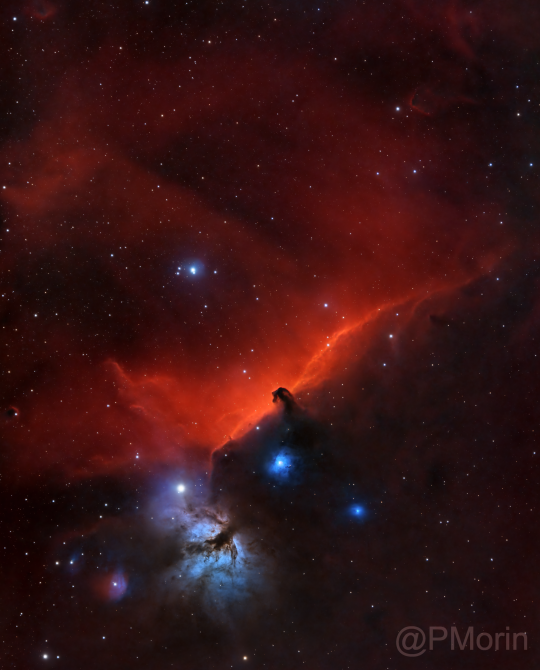
The Horsehead Nebula (Barnard 33, center) and the Flame Nebula (NGC 2024, bottom) // PMastro
#astronomy#astrophotography#nebula#emission nebula#dark nebula#diffuse nebula#horsehead nebula#flame nebula#Barnard 33#NGC 2024#Sh2-277#orion
284 notes
·
View notes
Text
NASA's Webb Telescope just dropped this INSANE image of a star-forming region called NGC 604
March 9, 2024, NASA's Webb Telescope just dropped this INSANE image of a star-forming region called NGC 604, located a whopping 2.73 million light-years away in our neighboring Triangulum Galaxy (aka M33)!

Want to dive deeper? Check out the full article ➡️ https://www.jameswebbdiscovery.com/discoveries/james-webb-telescope-sheds-light-on-the-chaotic-cradle-of-stars-in-ngc-604
#JWST #NASA #Space #Stars #NGC604 #TriangulumGalaxy #StarFormation #Cosmology #Astrophysics #Science #Astronomy #Universe #Exploration #Learning #Knowledge
#JWST#NASA#Space#Stars#NGC604#TriangulumGalaxy#StarFormation#Cosmology#Astrophysics#Science#Astronomy#Universe#Exploration#Learning#Knowledge
27 notes
·
View notes
Text
On 03/08/2024, the Hubble Space Telescope spotted the galaxy NGC 4423, a galaxy around 55 million light years away from Earth in the Virgo constellation. Here’s the article NASA posted:

NGC 4423
#astronomy#hubble space telescope#nasa#nasa news#space news#spaceblr#outer space#space#ngc 4423#galaxy#astronomy news
24 notes
·
View notes
Photo
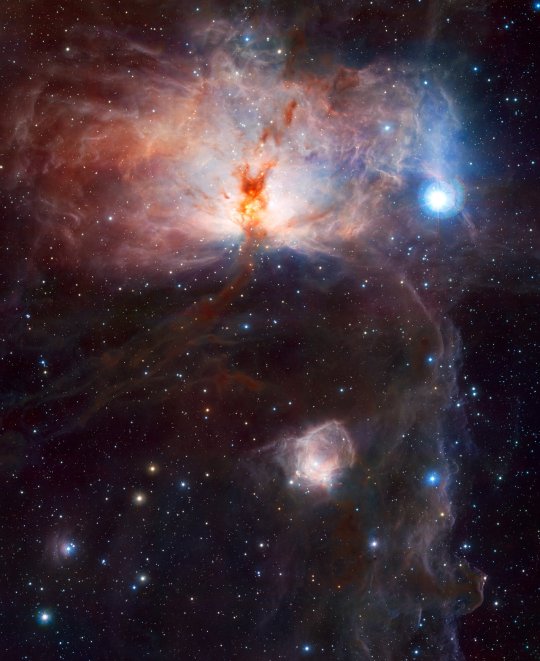

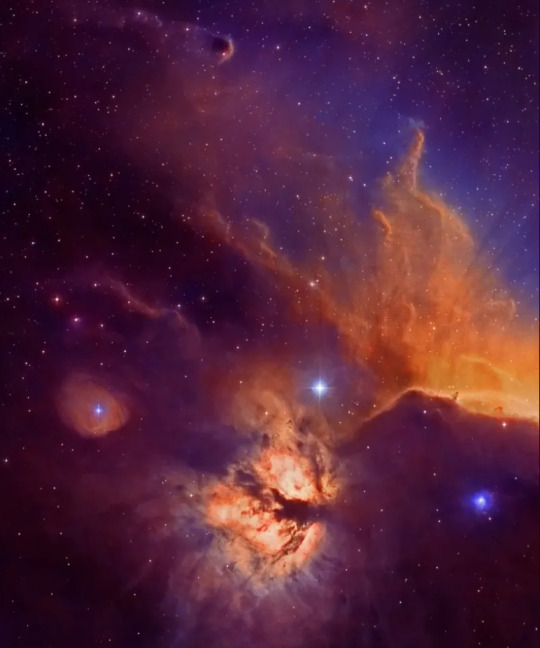
NGC 2024, Flame Nebula
#Astronomy#NASA#Night#Sky#Stars#Space#Science#Universe#Cosmos#Cosmic#Solar System#Flame#Fire#Nebula#Galaxy#Constellations#Constellation#Rainbow#Bright
3K notes
·
View notes